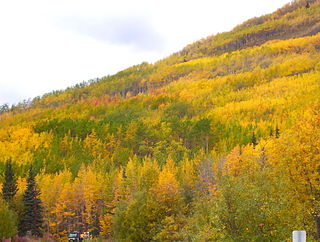
Cloning is the process of producing individual organisms with identical or virtually identical DNA, either by natural or artificial means. In nature, some organisms produce clones through asexual reproduction. In the field of biotechnology, cloning is the process of creating cloned organisms (copies) of cells and of DNA fragments.
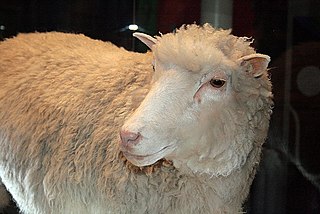
Dolly was a female Finnish Dorset sheep and the first mammal cloned from an adult somatic cell. She was cloned by associates of the Roslin Institute in Scotland, using the process of nuclear transfer from a cell taken from a mammary gland. Her cloning proved that a cloned organism could be produced from a mature cell from a specific body part. Contrary to popular belief, she was not the first animal to be cloned.
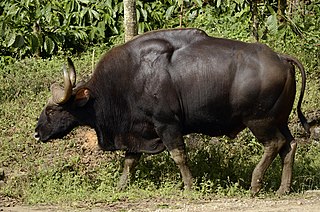
The gaur, also known as the Indian bison, is a bovine native to South and Southeast Asia, and has been listed as Vulnerable on the IUCN Red List since 1986. The global population was estimated at a maximum of 21,000 mature individuals in 2016. It has declined by more than 70% during the last three generations, and is extirpated from Sri Lanka and most likely Bangladesh. Populations in well-protected areas are stable and increasing.

The International Union for Conservation of Nature (IUCN) Red List of Threatened Species, founded in 1964, is the world's most comprehensive inventory of the global conservation status of biological species. It uses a set of precise criteria to evaluate the extinction risk of thousands of species and subspecies. These criteria are relevant to all species and all regions of the world. With its strong scientific base, the IUCN Red List is recognized as the most authoritative guide to the status of biological diversity. A series of Regional Red Lists are produced by countries or organizations, which assess the risk of extinction to species within a political management unit.
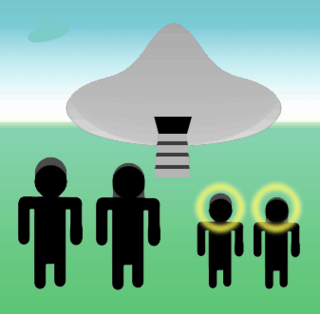
Clonaid is an American-based human cloning organization, registered as a company in the Bahamas. Founded in 1997, it has philosophical ties with the UFO religion Raëlism, which sees cloning as the first step in achieving immortality. On December 27, 2002, Clonaid's chief executive, Brigitte Boisselier, claimed that a baby clone, named Eve, was born. Media coverage of the claim sparked serious criticism and ethical debate that lasted more than a year. Florida attorney Bernard Siegel tried to appoint a special guardian for Eve and threatened to sue Clonaid, because he was afraid that the child might be treated like a lab rat. Siegel, who heard the company's actual name was not Clonaid, decided that the Clonaid project was a sham. Bioethicist Clara Alto condemned Clonaid for premature human experimentation and noted the high incidence of malformations and thousands of fetal deaths in animal cloning.
The year 2001 in science and technology involved many events, some of which are included below.

Larry King Live was an American television talk show hosted by the late Larry King on CNN from 1985 to 2010. It was the channel's most watched and longest-running program, with over one million viewers nightly.
Snuppy was an Afghan hound, the first dog clone. The puppy was created using a cell from an ear from an adult Afghan hound and involved 123 surrogate mothers, of which only two produced pups. The Department of Theriogenology and Biotechnology at Seoul National University, which cloned Snuppy, was led by Woo Suk Hwang. Snuppy has since been used in the first known successful breeding between cloned canines after his sperm was used to artificially inseminate two cloned females, which resulted in the birth of 10 puppies in 2008. In 2017, 4 clones of Snuppy were made by Sooam, and were the first clones made of a cloned dog, to investigate potential health effects of cloning.

Noah's Ark Zoo Farm is a 100-acre (40 ha) zoo developed on a working farm in Wraxall, North Somerset, 6 miles (9.7 km) west of Bristol, England, which promotes a form of creationism that includes a belief that the biblical story of Noah's Flood was an actual cataclysmic event. In 2009 the zoo was expelled from the British and Irish Association of Zoos and Aquariums, the main industry regulatory body, "for bringing the association into disrepute", but in 2018 it regained membership in the body. The zoo has the largest elephant enclosure in northern Europe.

Robert Lanza is an American medical doctor and scientist, currently Head of Astellas Global Regenerative Medicine, and Chief Scientific Officer of the Astellas Institute for Regenerative Medicine. He is an Adjunct Professor at Wake Forest University School of Medicine.
ARKive was a global initiative with the mission of "promoting the conservation of the world's threatened species, through the power of wildlife imagery", which it did by locating and gathering films, photographs and audio recordings of the world's species into a centralised digital archive. Its priority was the completion of audio-visual profiles for the c. 17,000 species on the IUCN Red List of Threatened Species.

The northern white rhinoceros, or northern square-lipped rhinoceros, is one of two subspecies of the white rhinoceros. Formerly found in several countries in East and Central Africa south of the Sahara, this subspecies is a grazer in grasslands and savanna woodlands. Since 19 March 2018, there are only two known rhinos of this subspecies left, called Najin and Fatu, both of which are female; barring the existence of unknown or misclassified male northern white rhinos elsewhere in Africa, this makes the subspecies functionally extinct. The two female rhinos belong to the Dvůr Králové Zoo in the Czech Republic but live in the Ol Pejeta Conservancy in Kenya and are protected round-the-clock by armed guards.

The richness and variety of the wildlife of Ethiopia is dictated by the great diversity of terrain with wide variations in climate, soils, natural vegetation and settlement patterns. Ethiopia contains a vast highland complex of mountains and dissected plateaus divided by the Great Rift Valley, which runs generally southwest to northeast and is surrounded by lowlands, steppes, or semi-desert.
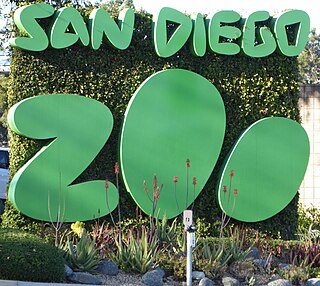
A frozen zoo is a storage facility in which genetic materials taken from animals are stored at very low temperatures (−196 °C) in tanks of liquid nitrogen. Material preserved in this way can be stored indefinitely and used for artificial insemination, in vitro fertilisation, embryo transfer, and cloning. Some facilities also collect and cryopreserve plant material.

An endling is the last known individual of a species or subspecies. Once the endling dies, the species becomes extinct. The word was coined in correspondence in the scientific journal Nature. Alternative names put forth for the last individual of its kind include ender and terminarch.
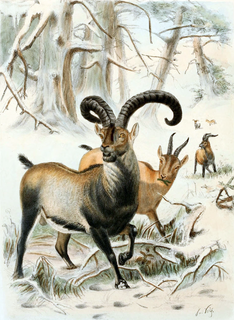
De-extinction is the process of generating an organism that either resembles or is an extinct species. There are several ways to carry out the process of de-extinction. Cloning is the most widely proposed method, although genome editing and selective breeding have also been considered. Similar techniques have been applied to certain endangered species, in hopes to boost their genetic diversity. The only method of the three that would provide an animal with the same genetic identity is cloning. There are both pros and cons to the process of de-extinction ranging from technological advancements to ethical issues.

Elizabeth Ann is a black-footed ferret, the first U.S. endangered species to be cloned.














